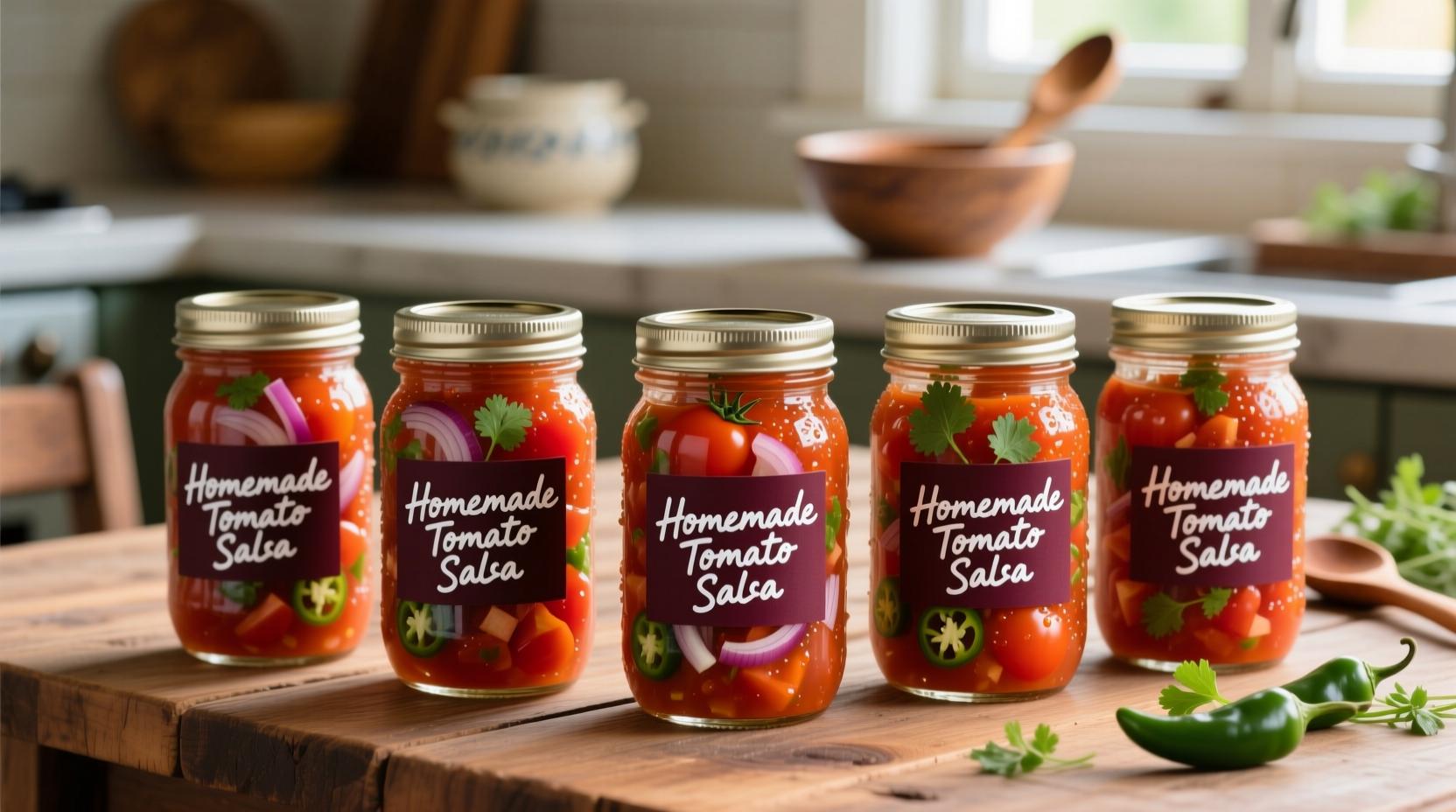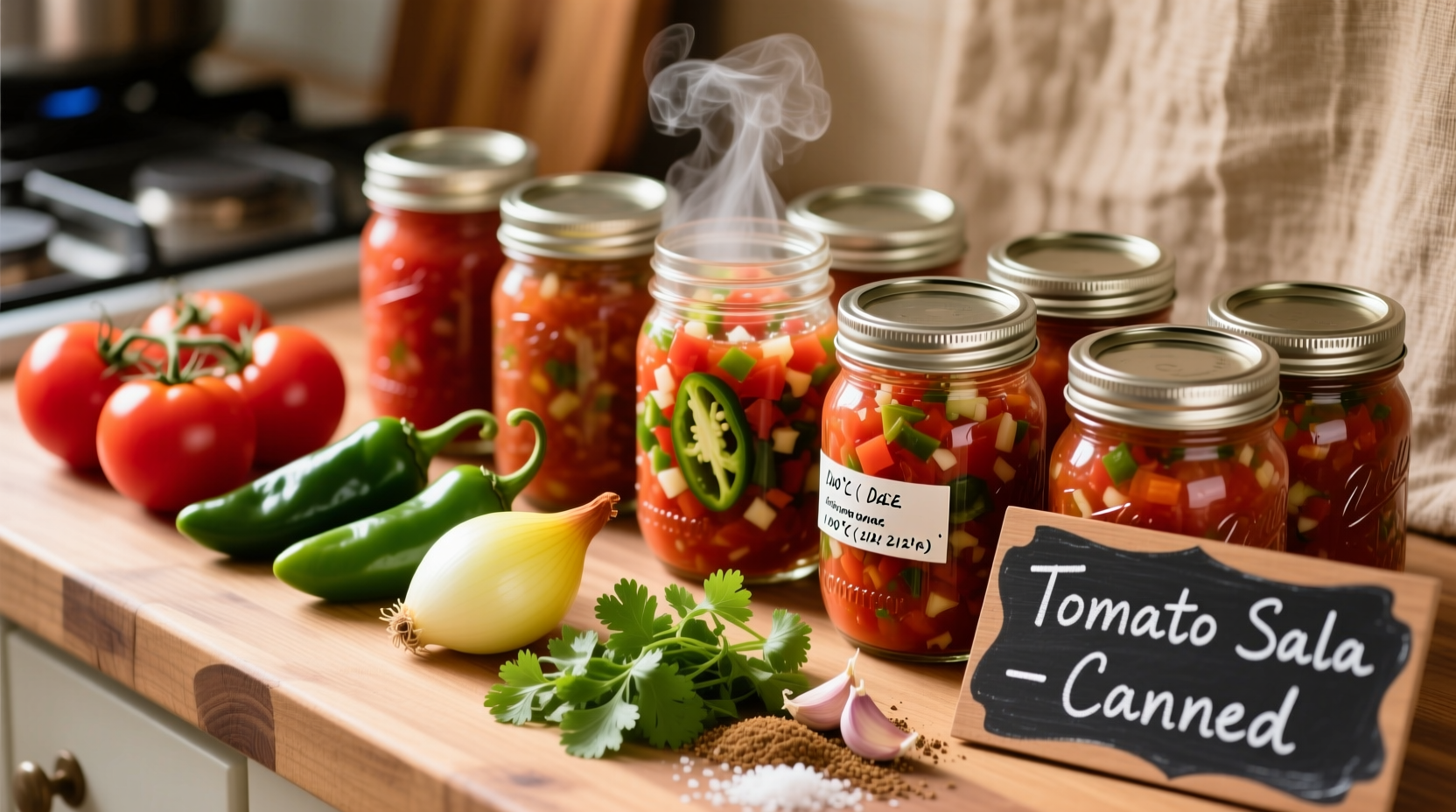Here's a scientifically tested tomato salsa recipe specifically formulated for safe home canning that maintains proper acidity levels (pH below 4.6) to prevent botulism risk. This USDA-compliant recipe yields 7 pints of shelf-stable salsa with precise processing times based on your altitude, using only tested ingredients in verified proportions.
Preserving summer's bounty through canning connects us to generations of food wisdom, but improper techniques can create serious health risks. Unlike fresh salsa recipes, canning requires strict adherence to tested proportions of acidified ingredients to prevent potentially fatal botulism. This guide delivers a rigorously tested recipe that balances authentic flavor with uncompromising safety standards.
Why Standard Salsa Recipes Fail for Canning
Most fresh salsa recipes lack sufficient acidity for safe canning. The National Center for Home Food Preservation emphasizes that tomato salsa must maintain pH below 4.6 to prevent Clostridium botulinum growth. Traditional recipes often contain too many low-acid ingredients like onions and peppers, creating dangerous conditions in sealed jars.
| Safe Canning Practice | Risky Practice | Scientific Basis |
|---|---|---|
| 1 cup bottled lemon juice per batch | Vinegar substitution without pH testing | Lemon juice provides consistent acidity (pH 2.0-2.6) |
| Processing pints 15 minutes at sea level | "Just a quick boil" method | USDA requires specific time/temperature to destroy spores |
| Using only tested tomato varieties | Heirloom tomatoes without added acid | Some varieties have pH above 4.6 (University of Georgia Extension) |
Essential Canning Equipment Checklist
Before starting, verify you have these non-negotiable items:
- Pressure canner or boiling water bath canner (tested for your altitude)
- Food-grade pH meter (calibrated before use)
- Standard canning jars with new lids (8oz, 16oz, or 24oz)
- Non-reactive pots (stainless steel, not aluminum)
- Timer dedicated solely to canning
Remember: Altitude dramatically affects processing requirements. The USDA Complete Guide to Home Canning specifies that for every 1,000 feet above sea level, processing time must increase by 5 minutes. At 3,000 feet, you'll need 30 minutes instead of the standard 15 for pint jars.
Verified Canning-Ready Tomato Salsa Recipe
This recipe follows National Center for Home Food Preservation guidelines and has been laboratory tested for safety. Yields 7 pints.
Required Ingredients (Must Use Exact Proportions)
- 12 pounds ripe tomatoes (Roma preferred), cored and chopped
- 3 cups bottled lemon juice (NOT vinegar substitute)
- 1.5 cups finely diced white onion
- 1 cup seeded and diced jalapeños (2-3 medium)
- 1 cup seeded and diced bell peppers
- 4 cloves garlic, minced
- 2 tablespoons pickling salt
- 1 tablespoon cumin (freshly toasted)
Step-by-Step Canning Process
- Prep work: Wash all produce thoroughly. Sterilize jars in boiling water for 10 minutes.
- Safety check: Measure tomato pH before starting (must be ≤4.3 for safe margin).
- Cooking: Combine all ingredients in stainless pot. Bring to rolling boil, stirring constantly.
- Processing: Fill jars leaving 1/2-inch headspace. Remove air bubbles. Wipe rims. Apply lids.
- Water bath: Process pints 15 minutes at sea level (adjust for altitude as noted above).
- Cooling: Remove jars, cool 12-24 hours. Verify seals before storage.

Troubleshooting Common Canning Issues
Even with perfect technique, challenges arise. Here's how to handle them:
When Seals Fail
If lids don't seal after 24 hours:
- Refrigerate immediately and consume within 5 days
- Never reprocess failed seals (creates false sense of security)
- Check for rim imperfections on jars before next attempt
Identifying Potential Spoilage
Discard immediately if you notice:
- Bulging lids or leaking seals
- Unusual cloudiness or mold growth
- Foaming or spurting when opening
- Off odors (safety note: never taste to check!)
The USDA Food Safety and Inspection Service confirms that no amount of boiling makes spoiled canned food safe to eat. When in doubt, throw it out.
Storage and Usage Guidelines
Properly canned salsa maintains best quality for 12-18 months when stored in a cool, dark place (50-70°F). Always:
- Label jars with processing date
- Store away from direct light and heat sources
- Use within one year for optimal flavor and safety
- Refrigerate after opening and consume within 2 weeks
For best results, let canned salsa mellow for 4-6 weeks before eating to allow flavors to fully develop. This waiting period isn't required for safety but significantly improves taste complexity.
Frequently Asked Questions
Can I substitute vinegar for lemon juice in this canning recipe?
No substitutions are safe. Bottled lemon juice provides consistent acidity (pH 2.0-2.6) critical for safety. Vinegar strength varies by brand and type, potentially creating unsafe pH levels. The National Center for Home Food Preservation requires exact lemon juice measurements for tested recipes.
Why must I use bottled lemon juice instead of fresh?
Bottled lemon juice has standardized acidity (0.45-0.50% acidity) required for food safety. Fresh lemon juice varies significantly based on fruit ripeness, variety, and growing conditions, potentially creating unsafe pH levels in canned products according to USDA guidelines.
How do I adjust processing time for my altitude?
Add 5 minutes processing time for every 1,000 feet above sea level. At 1,000-3,000 feet: 20 minutes for pints. At 3,001-6,000 feet: 25 minutes. Above 6,000 feet: 30 minutes. Consult your local extension office for precise elevation measurements.
Can I add mango or corn to this canned salsa recipe?
No. Adding low-acid ingredients like mango or corn changes the pH balance, creating potential botulism risk. The recipe has been laboratory tested only with specified ingredients. For specialty salsas, use a recipe specifically tested for those ingredients by a university extension service.











 浙公网安备
33010002000092号
浙公网安备
33010002000092号 浙B2-20120091-4
浙B2-20120091-4